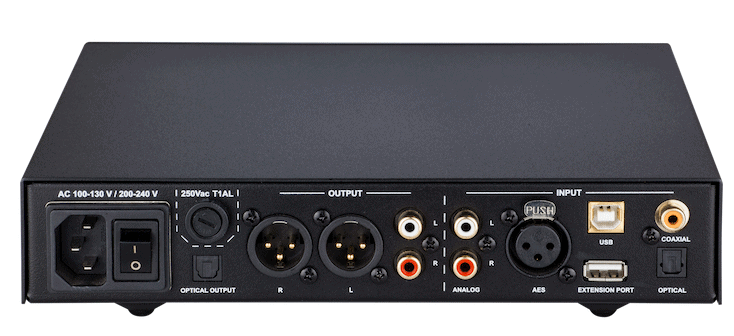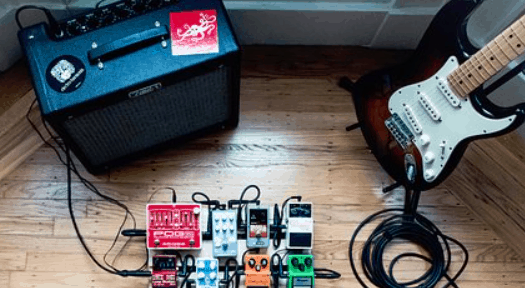Amplifiers and DACs…
Do you know the difference?
Do you know what they do? Any idea of how they operate?
When do you need an amp? Or when do you need a DAC?
I know, these questions might look tricky, but hey, you need to be sure about this, otherwise you will be in front of a never-ending studio connection hassle where no music can be made.
Oh I know… You own a pair of passive speakers and your friend (the one with the crappy rock band) said you needed an amp to drive the speakers, but not a DAC.
Is that true? Or is your friend simply crazy and has no idea of what is going on?
Well, read this, and at the end you will know exactly the differences between those two devices and when to use them!
Amp vs Dac: Which is for you?
What is a DAC?
DAC stands for Digital to Analog Converter, but some people refer to them as sound cards.
So yes, a DAC is a piece of gear, used in audio that will convert a digital signal to analog in order to listen to music!
The digital signal can be received by this device using any type of digital input audio protocol like ADAT, SPDIF, AES, USB or Optical connection.
DAC's are typically capable of configuring for different sample rate options that ultimately yield different audio quality.
The analog output could come in a variety of different connections, both balanced and unbalanced such as TRS, TS, XLR, headphone out.
There are DAC's designed for headphone outputs, others for line outputs, it just depends on what you need!
Audio interfaces are also DAC's because they convert the digital audio (recorded music) coming from your computer via USB to analog via their TRS or XLR outputs.
What is an AMP?

AMP stands for Amplifier.
An Amplifier is a device that is typically analog all the way.
This means it receives an analog signal and amplifies it to another analog signal.
The vast majority of amplifiers receive a line level analog audio signal, and are capable of creating an output at the speaker level with low noise.
Only a handful of amplifiers have headphone outputs, but typically they have no independent volume control.

So basically, you can connect the output of your CD player to your amplifier's input, and your passive speakers to its outputs.
And BOOM! Party started!
Now, that is not the only amp style…There are also instrument amps, like an electric guitar amplifier.
These instrument amplifiers take a very low level instrument input signal (such as an electric guitar or bass) coming from a magnetic pickup, and amplify it using several stages of gain to drive the speaker horn and get you that "rock tone" that you all love!
Amp vs Dac – What are the differences?
- DAC's typically run line level outputs, while Amps run speaker level outputs.
- DAC's are normally small and lightweight, but Amps are often heavy and bulkier.
- Amplifiers do not often provide independent control for headphone level, while the DAC will.
- Amplifiers are often all analog input-to-output while DAC's convert digital to analog.
- Amplifiers can run passive speakers, while DAC's can run active speakers and headphones with great sound quality.
- Another difference is that most amplifiers are rack-based pieces of gear while DAC's are normally desktop style devices.
- DAC's present the user with more level control and source switching, Amplifiers normally only have control for output gain, and sometimes this gain is even fixed, reducing chances of potentiometer noise.
- The power supply on an amplifier typically has a higher electric consumption rate compared to the DAC power supply.
Amp – Who is this for?

Let's say you are a mix engineer and you own a pair of passive NS10's from the gold days of record business, right?
Well in that case, you will in fact need an amplifier to run those speakers, because they are passive. They need an amp to make them shake!
Now, let's say you are a guitar player, you own a Fender Strat and play in a band.
Guess what? Electric guitars do not make sound by themselves, they need an electric guitar amp.
So in this case you would need an electric guitar amplifier where you could plug your guitar with your cables, set the gain, and start rocking with real sound quality!
DAC – Who is this for?

If you have a home studio with active speakers, but you need a way to convert the digital audio signals you have in your computer's Digital Audio Workstation into analog signals to feed the active speakers, you will need a DAC.
Think about it… The DAC will receive digital via USB, convert it to analog, send it to your active speakers via TRS or XLR and then your speakers will output the sound!
Amazing!
Same concept applies to headphones! If you like to mix and master on a pair of headphones, you will need a DAC to drive those cans with the best sound quality, just like your music deserves.
Do I need a DAC or an AMP?
If you read the two cases I explain previously, you have probably discovered that you might need both actually!
Me, personally, I own both.
Why?
Because I have active speakers as well as passive speakers in my studio, so the only way to drive those is by having both systems.
I know it sounds a bit too much, but honestly I have no other options.
Now, if you want to reduce the hassle of having two parallel systems, my recommendation is that you get active speakers as well as headphones, and get rid of the passive ones.
This way you will be able to get the job done by only having a DAC, no Amplifier needed. Time to make music and to enjoy great sound quality.
Conclusion
So at this point you know the differences between an Amp and a DAC.
We also explained how and when to use them.
The question is, do you need them?
Think about this…
Can you run a studio based on all active speakers and headphones?
Well, then you might just need a DAC.
Are you still sentimentally attached to those old passive speakers that you inherited from your grandfather?
Well, then you will need at least a small stereo amp to drive those.
Do you play an electric guitar or electric bass and rehearse with a band?
Guess what, you will need an amp to run those, otherwise none will be able to hear you!
Do you own a sound system for live music purposes with dozens of passive floor monitors?
Then you need amplifiers!
It is all up to you now. Look around, check your case and make a decision.
BOOM!

